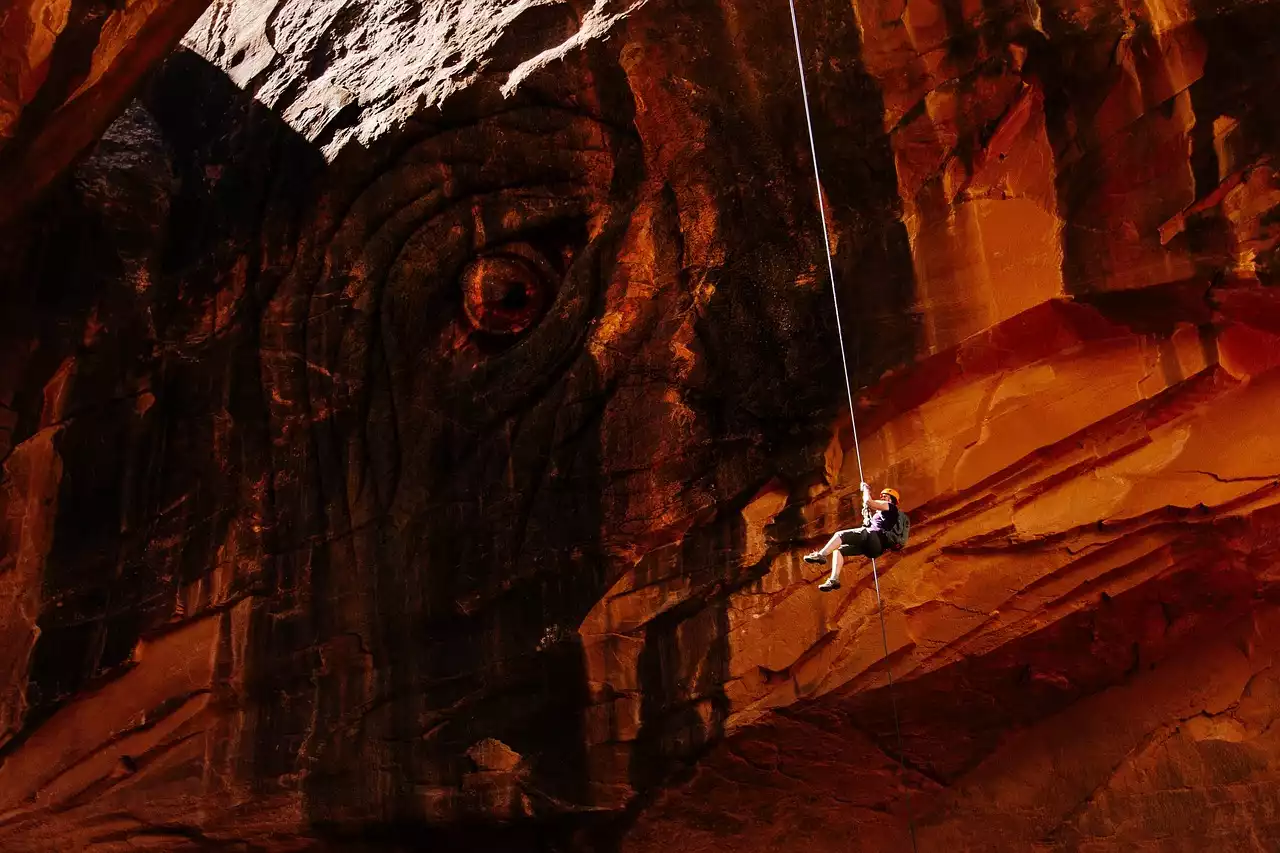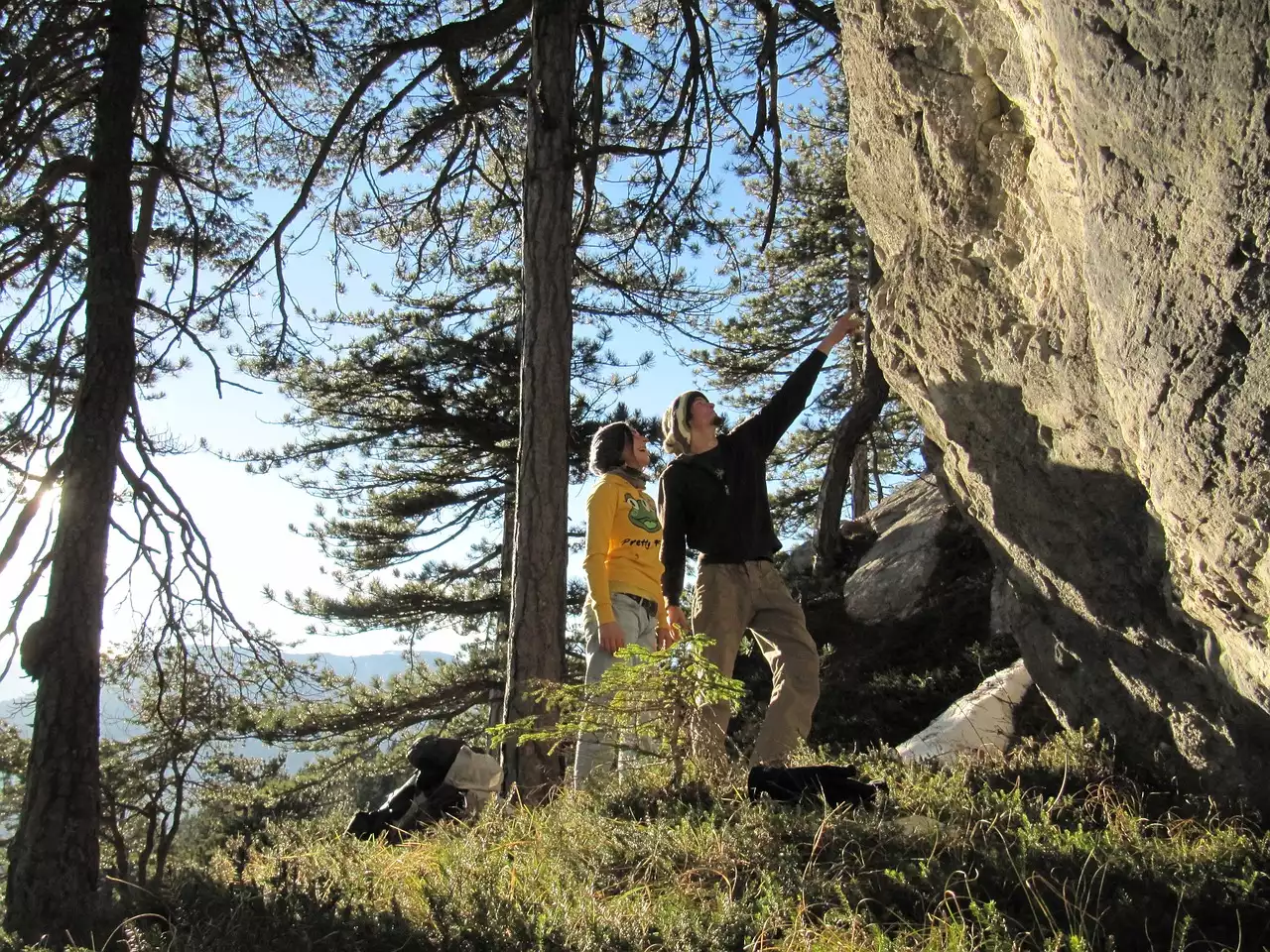Benefits of Stepping Through
- A higher level of difficulty - As one progresses through the steps of Stepping Through, they can use the technique to link together harder climbing routes or move between harder and easier climbing holds. As one becomes more proficient at Stepping Through, the ability to link together harder routes and move between holds becomes much easier and more efficient. This is a great way to increase the difficulty of one's climbing and is especially useful for people who enjoy climbing at various levels of difficulty.
- Increased climbing speed - The ability to move between holds with precision and fluidity allows a climber to move quickly and efficiently between holds. This is especially beneficial when climbing in areas where the holds are spaced farther apart and there are more challenges to overcome. The ability to move quickly between holds can reduce the amount of time it takes to reach the top, allowing for a more efficient climb.
- More fine motor skills required - One of the core elements of Stepping Through involves maintaining the same level of body tension throughout the technique. This allows one to focus on the mechanics of climbing, such as foot placement and body positioning. Maintaining the same level of body tension requires increased focus and control from the climber.
- Additional strength training needed - When climbing, the entire body is required to create momentum while climbing and to maintain the same level of body tension. This includes the arms and legs, as well as the core. When one begins to step through climbing routes, one needs to use this strength while stepping and maintaining the same level of tension throughout the technique. This can be a good way for climbers to increase their level of strength and overall fitness, as many climbing gyms are designed for indoor climbing only.
- Better coordination required - When climbing, the eyes and hands are required to work together to give a clear, accurate, and precise picture of where a climber wants to go. When stepping through a route, the eyes must still be focused on the holds, while the hands must be precise and accurate in their placement. This can be a beneficial and challenging way to increase one's level of coordination and coordination.
The key elements of Stepping Through
- Foot placement - The movements of the feet are crucial in Stepping Through. To maintain the level of body tension, the climber must focus on the placement of their feet. When stepping through a route, the climber's feet should be placed on the next hole at the same angle as where they are standing at. This will maintain the same level of body tension. This angle should vary depending on the difficulty of the route, as the easier the climb, the less critical the angle placement is.
- Wrist angle - One of the most important elements of Stepping Through is the wrist angle. The angle of the wrist should be placed on the same level as where the climber's foot is placed. This will maintain the same level of body tension, while also allowing for a smooth and controlled movement.
- Hand placement - When stepping through a route, the climber should place their hand on the next hold at a slightly different angle than where they are holding it. This will allow for the same level of body tension, while also allowing for a smooth and controlled movement.
- Breathing - Once one has placed their foot on the next hold, they should inhale and activate their core muscles. This will allow the climber to maintain the same body tension level while stepping and moving between the holds.
How to practice Stepping Through
The best way to practice Stepping Through is on low-intensity climbing routes. The holds should be small and close together, and the routes should be short and of low difficulty. This will help one develop the necessary hand and foot positioning without the need to worry about any additional challenges. When practicing Stepping Through, one should focus on the key elements of the technique: foot placement, wrist angle, and hand angle. If a climber is tall, they should aim to place their foot on the next hold a bit closer to the ground. If a climber is short, they should aim to place their foot higher on the next hold. The wrist angle should also vary depending on how the hand placement differs. A climber should look at the route and determine which hand they would place on the next hold. Once they have determined which hand to use, they should focus on maintaining the same body tension level while stepping and moving between the holds.
Common mistakes to avoid
- No foot placement - Missing the placement of the foot on the next hold is one of the most common mistakes in Stepping Through. If one's foot lands on the next hold, but the foot is not planted on the hold, the level of body tension will be compromised. This will cause the climber to sway from side to side, wasting energy and making it more difficult to move smoothly between the holds.
- Wrist angle - When stepping through a route, the hand angle should vary depending on the hand placement. This will allow for the same level of body tension, while also allowing for a smooth and controlled movement.
- Hand angle - The hand angle should also vary depending on the hand placement. This will allow for the same level of body tension, while also allowing for a smooth and controlled movement.
- No breathing - Maintaining the same body tension level while stepping and moving between the holds requires breathing. If one does not breathe during the technique, their body will become tense and stiff, making it more difficult to move smoothly between the holds and maintain the same level of body tension.









